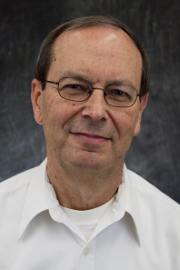In 2013, AMAT competed in the Advanced Class at SAE Aero Design West at team 215. The event was hosted at the San Fernando Valley Flyer’s Club’ Apollo 11 field in Van Nuys, California.
Design Objective:
“The objective of the Advanced Class is to design the most efficient aircraft capable of accurately dropping a three pound (3 lb) humanitarian aid package from a minimum of 100ft off the ground. Though the class is mostly focused on mission success, students will need to perform trade studies to optimize empty weight and anticipate repair build-up weight while meeting several aircraft design requirements.”
Competition:
AMAT sent a large contingent of 15 members to the SAE Aero Design West competition held in Van Nuys, CA April 12-14th 2013. Arriving on Thursday night, the team spent the remaining time leading up to technical inspection completing a new set of wings and equipping Zephyrus with its livery. Friday afternoon, captains Alex, Ilya, and Logan presented AMAT’s design to a panel of retired Boeing and Lockheed Martin engineers. The presentation detailed design decision, computational and experimental testing, the build process, and Zephyrus’
final configuration. AMAT received 2nd place in presentation, only a fraction of a point behind the Stevens Institute of Technology. This placed AMAT in first place entering flight rounds.
Technical inspection did not proceed as smoothly as our presentation. The team worked frantically up until the last minute to get our plane into flying shape for the inspection, however an idiosyncrasy in the rules, we were unable to complete technical inspection on Friday. Zephyrus had been designed to be balanced while loaded with it’s static cargo in place, however the inspectors expected the aircraft to have an empty weight CG capable of flight. This was not explicitly stated in the rules and was justified by the static cargo being described as “simulated fuel”. AMAT worked through the night trying to come up with ways to balance our aircraft, but these efforts proved unsuccessful. Ultimately, we decided to use a portion of our static cargo as ballast so that we could pass inspection and do what we came to competition to do, fly our aircraft. The necessary ballast however, placed us over the maximum empty weight and under the minimum static cargo weight forcing a flight score of zero. None the less we decided to attempt a flight.
AMAT struggled with last minute problems that prevented Zephyrus from flying in the first three rounds. In the last round of the first day of competition flight, Zephyrus took to the air with just enough weight to balance our center of gravity. Seconds after take-off, signal was lost to the radios and the failsafe system cut the engine. Zephyrus promptly nosed into the runway with the loss of power. Damage was minimal. The firewall was torn, the prop was broken, and the front gear was bent. We were able to epoxy the firewall back into place and replace the prop and front gear vertical with spare components. Trouble finding and elusive 13×4 propeller on a Sunday delayed Zephyrus enough to miss the first flight round of the day. However, the team pressed on determined to see a year of hard work fly. With a 13x4W prop in position, Zephyrus was ready to fly for the last round. In the final flight of the entire competition, Zephyrus’ hulking yellow form was lifted into the air and gained altitude. The deploy-able cargo was released on a second pass, validating the drop mechanism design. Lack of calibration however prevented an accurate drop on target. Zephyrus was able to return safely to Earth after an aborted initial landing attempt.
AMAT finished the competition with high honors. We achieved First in design report, Second in technical presentation, and Second overall at SAE Aero Design West. Only the Warsaw University of Technology were able to score a flight score bringing the above AMAT in the final rankings. AMAT will continue to test Zephyrus at home in Davis to dial in our payload delivery system for next years competition. The team debriefed giving feedback on the design and construction of the aircraft as well as team structure and ethos. This will help improve both AMAT’s performance at competition and most importantly its ability to provide students with a valuable educational experience.
Team Captains:
Ilya Anishcenko
Alex Beckerman
Logan Halstrom
Team Members:
Michael Wachenscwanz
Gene Barram
Max Berm
James Dionisopoulos
Louis Edelman
Robert Edwards
Hashmatullah Hasseeb
S. Sheida Hosseini
Steven Hung
Sara Langberg
Chris Lorenzen
Kelley Lundquist
Arlene Macias
Robyn Murray
Nohtal Partansky
Jason Peterson
Trishe Revolinsky
Adam Simko
Stefan Turkowski


